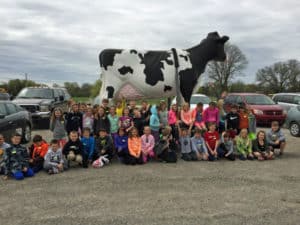(Chelsea Update would like to thank Kristin Krarup-Joyce, Ed. S. NCSP, Ellen Kent, Ed. S. NCSP and Emily Verbeke, Ed. S. NCSP for the information in this weekly column. If you have a question for one of the school psychologists, please email [email protected]. All information will be kept confidential.)
This is the second part of a two-part column. In case you missed part 1, click here.
“Fishful Thinking” Fun and Easy Activities
Make a Grateful Sayings Poster. Get a piece of poster board and write “For This I Am Grateful” in big letters across the top. Ask everyone in your family (and friends and neighbors, too) to write or draw something on the poster for which they are grateful.
It can be something big (like getting an A on a test or winning the soccer championship) or something small (like getting to stay up an extra 15 minutes or taking a fun walk with dad). Ask each person to put his name or initials under what he writes or draws.
Keep the poster up all month so that everybody can continue to add to it. By making this a month-long activity, you are showing your family that gratitude is something we experience every day, if we make the time to notice it. At the end of the month, bring the poster to the dinner table and take turns reading aloud what was written.
Keep a Good Stuff Journal. Most people spend far more time thinking about how they can correct something that has gone wrong, worrying about something that is about to go wrong, or simply replaying a failure or setback, than they do basking in what has gone right and being grateful for their everyday blessings.
You can help your child notice what goes well in his or her life and build gratitude by keeping a Good Stuff Journal. Analyzing why events go well, what the positive events mean to us, and how we can create circumstances that enable more good things to occur, encourages a consciousness of blessings and gratitude and promotes optimism.
Every night, set aside a few minutes with your child and write down three positive events from the day. These things can be relatively small in importance (“My mom made my favorite dessert tonight.”) or relatively large in importance (“My leg has finally healed and my cast got taken off.”). The positive events can be things that your child brought on (“I got an A on the test.”) or that he or she witnessed in others (“My sister helped my brother with his homework because mom was busy.”).
The positive events can also be things noticed in nature (“A cool looking bird was sitting outside my window.”). Next to each positive event that your child lists, write a reflection (at least one sentence) on any of the topics below:
• Why this good thing happened
• What this good thing means to you
• What you can do tomorrow to enable more of this good thing
• What you learned from taking the time to name this good thing
• What ways you or others contribute to this good thing
For more activities to help build gratitude in your children,go to the National Association of School Psychologists.














